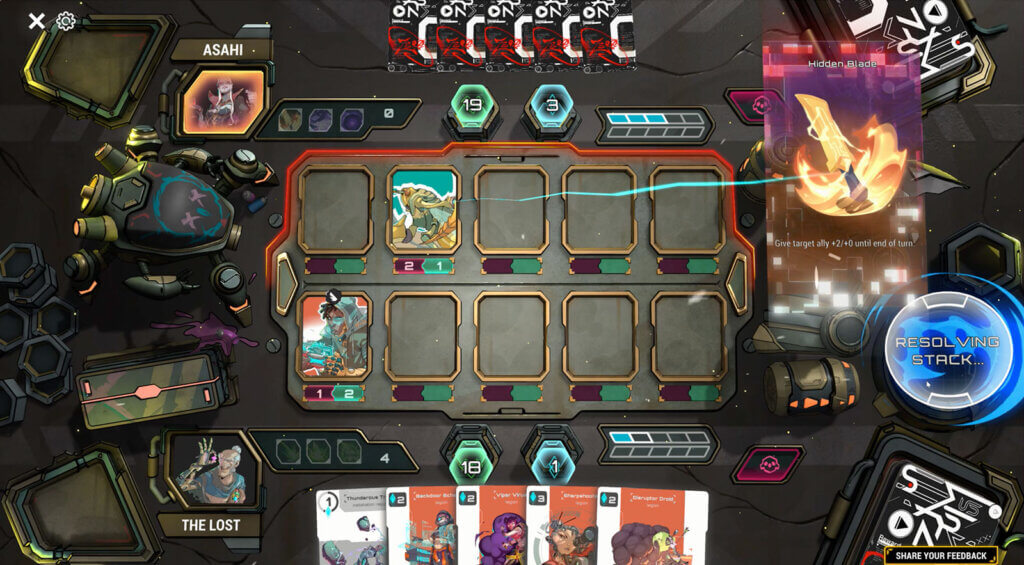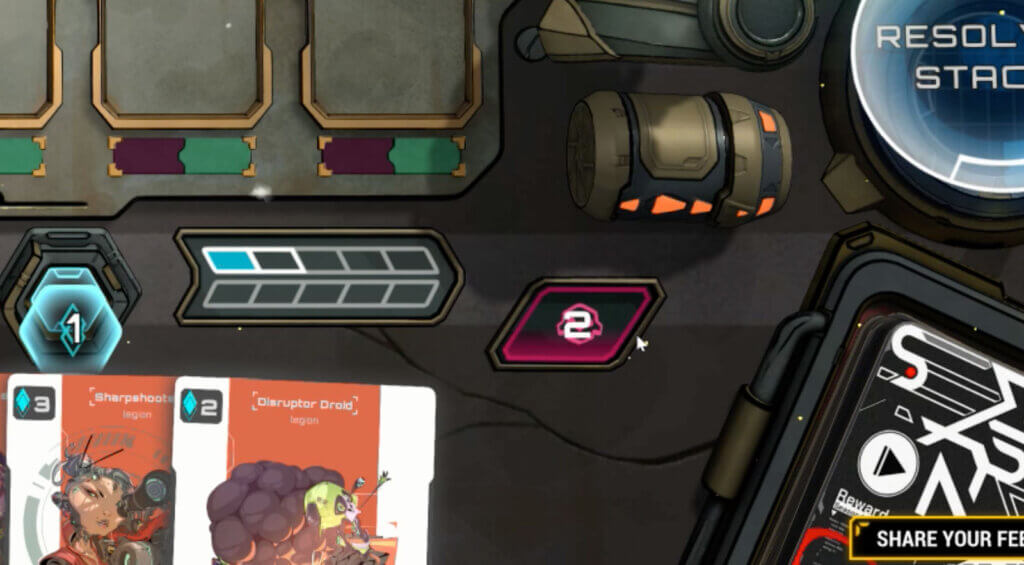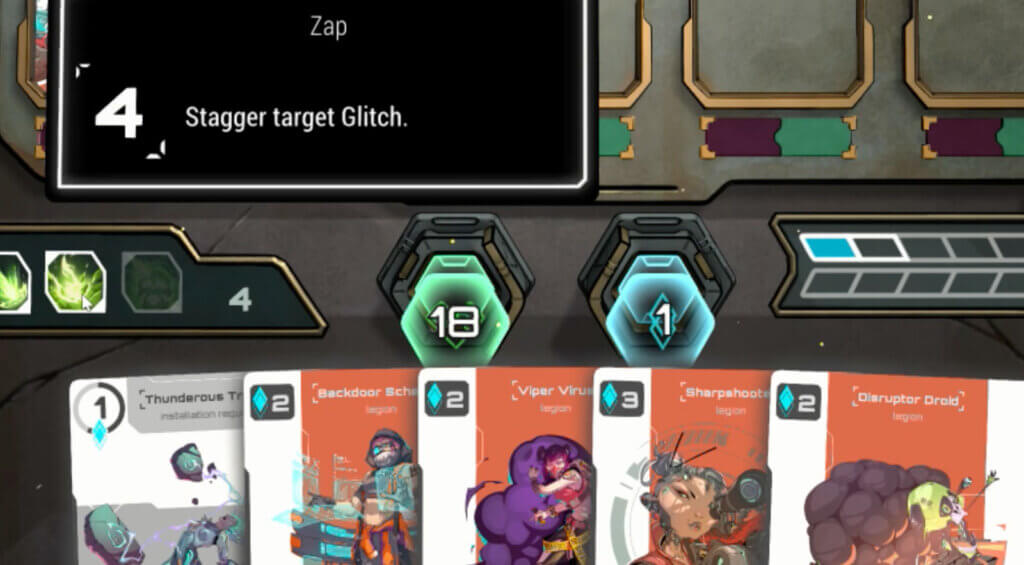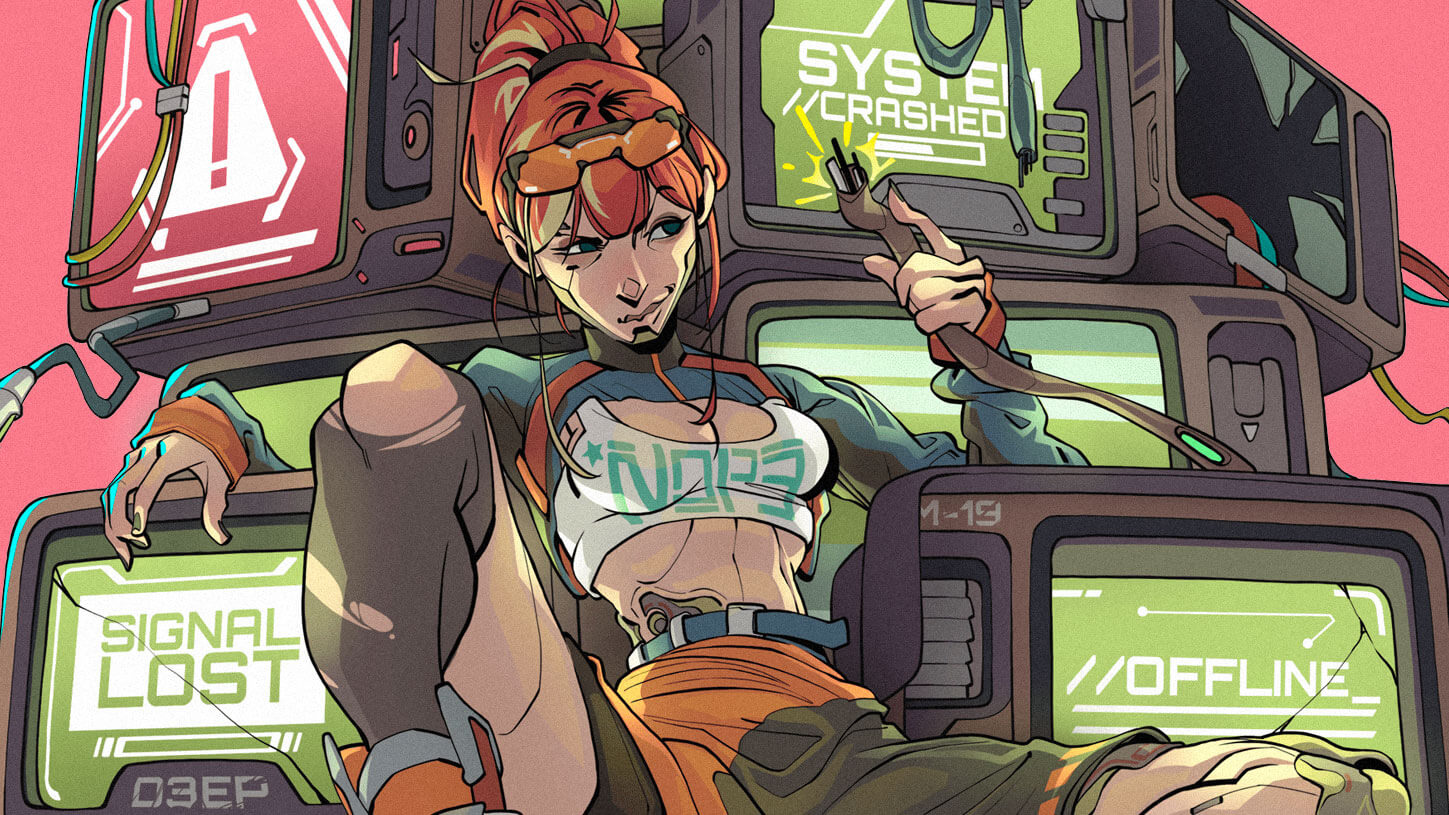The Lost Glitches: A Detailed Breakdown of the Core Turn Structure
Salutations Commanders! In order to help you to enhance your battleground strategies and better understand the different phases of Deep Sky card battles, we prepared a detailed breakdown of the turn structure for you, as well as providing you with all the necessary information to understand it.
Core Turn Structure
The basics of the core turn structure are simple and easy to comprehend. There are only two phases: the Main Phase and the Attack Phase. Players, also known as Commanders, each start with 1 Energy and regain Energy at the beginning of their turn. Maximum Energy capacity is reached at turn 10 with 10 Energy. The players start with 6 cards in their hands and draw one card at the beginning of each turn. Before the opposing Commanders engage each other in attacks, each has a chance to play cards before combat starts on each turn.
Attacking / Defending
Players alternate turns. A turn being defined as each player’s opportunity to attack the other Commander. A Commander is able to attack with their Glitches and Software Cards when it is their turn. The defender is able to block Glitches but has the upside of choosing whom to block with whom. A defending Glitch can only block one single attacking Glitch and vice versa. Should the defender have saved some Energy from their own attack turn, they can also still use it to play a Software or Glitch Card.
Glitches are ready to attack upon initialisation onto the battleground, there is no buffer time (i.e. summoning sickness). After attacking or defending, Glitches do not change state (i.e. tapped/untapped) unless, of course, they were defeated in action, in which case they die and go to the card graveyard.
Turn Phases

Main Phase
At the start of the turn each player has the option to initialise Glitches or play “Plug and Play” or “Installation Required” Software Cards, as well as to activate specific Glitch character abilities (i.e. Warbloom Summoner using the Recruit ability).
The attacking Commander can then choose which Glitches to attack with or skip their attack turn entirely.

Attack Phase
During combat Commanders can activate any number of Plug and Play Software Cards and Glitch abilities that their Energy levels allow them to play and activate.

The Stack
The last Software Card or Commander ability activated is the one that plays out and resolves first.
Glitch Initialisation
Initialising a Glitch means playing a Glitch Card and putting in on the battleground, which is a motherboard with 5 slots. A Commander can only ever have a total of 5 Glitches on the battleground at any given time.

Glitch Death
Once a Glitch’s health reaches zero, it dies. Upon death and arrival in the card graveyard, all stats, Abilities and Talents are reset back to their original values.
Glitch De-Initialisation
If a Glitch gets de-initialised, it returns back into the player’s hand with all its stats, Abilities and Talents restored.
Win Conditions
If a Commander’s health reaches zero, the other Commander triumphs over them in victory and wins the game. Players are allowed to forfeit a match at any given time without any negative consequences, except for losing the forfeited match.

Starting Cards
At the start of a match, each Commander draws 6 cards from their deck. They then get to choose if they wish to keep their cards or discard any number of them back into their deck in order to redraw new ones instead. This is called a Mulligan and there is no cost for performing one. No additional card is drawn at the start of the first player’s attack turn.
Drawing Cards
The only time that players draw cards is at the start of their turn (except the very first attack turn) or through any abilities, Software Cards or Commander Skills.

Energy
To execute most actions, enough Energy to perform them is necessary. There are some exceptions to the rule, for example sacrificing the Disruptor Droid in order to stagger an enemy Glitch. It’s simple, Commanders start with 1 Energy and receive 1 additional Energy to their pool every time it is their turn. This goes from 1 Energy to a maximum of 10 Energy at and after the tenth turn. At the start of a player’s turn, used energy is filled up, so it pays to try to make the most of your Energy allowance or risk squandering the leftover Energy by not using it (It is of course possible not to be able to use all available Energy during a turn due to card initialisation constraints and there can also be tactical reasons not to use it all up).
Time Limit
There are Phase Time Limits: If a player misses to perform an action during their phase, their opportunity to perform an action is skipped after a specific time limit. If a player misses a phase, their allotted time for the next phase will be shortened.
There is also a Time Limit: If a Commander misses two phases in a row they automatically forfeit the game.
Decking Out
It is possible for a player to run out of cards, a situation that is known as decking out. It can occur if a match has gone on for a very long time or can be brought about by specific tactics and use of Software Cards, Commander Skills and Glitch Abilities (i.e.Magus Apprentice ) that draw more cards from a player’s deck. If decked out, each time a player attempts to draw a card they get punished with 1 damage to their health the first time, 3 damage the third time, 6 damage the sixth time and so on. Opponents are not able to trigger this effect and it is only triggered at the start of a turn when a decked out player attempts to draw cards from their empty deck.
Outro
May the detailed insights into the turn structure of The Lost Glitches game help you play and enjoy our game and support you in crafting your battleground strategies to perfection so that a trail of victories follows in your wake!
